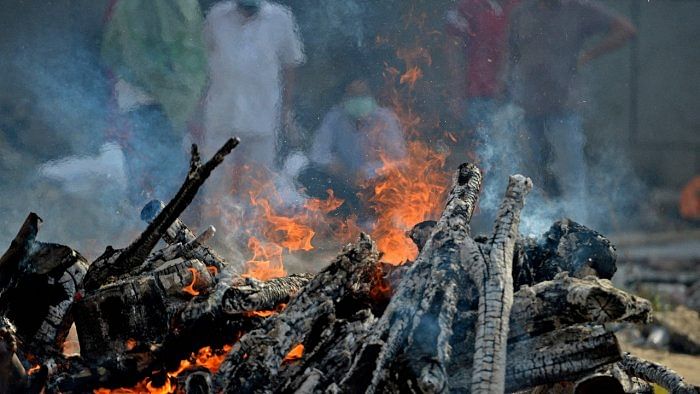
Bengaluru recorded the highest 28-day Covid mortality with a Moving Growth Rate (MGR) of 82% in the lockdown period from April 14 to May 12, a study by Jeevan Rakshe has found. The city accounted for 24% of the 17,000 deaths recorded in six biggest Indian cities.
Bengaluru was only behind Delhi, which recorded over 50% of the deaths. In terms of MGR, the national capital was second with 76%.
“This means the doubling period for deaths is shorter than other mega cities. This indicates that both cities are relatively facing more challenges to early detect the infected people and accordingly provide appropriate medical intervention,” the study notes.
During the week ending May 12, as many as 5,534 deaths occurred in the six cities.
Of these, 35% were in Bengaluru (1,958). The average daily deaths during the week were: Delhi (321), Bengaluru (280), Chennai (72), Mumbai (66), Kolkata (34) and Ahmedabad (18).
Concluding that the lockdown failed to save lives, the study says there is no linkage between strategy, people and operation processes in Covid management.
Mumbai is the only mega city that reduced the seven-day MGR of positive cases, active cases and mortality.
During the April 14-May 12 period, Covid cases doubled in Bengaluru from 5 lakh to 10 lakh, in Delhi it surged from 7.6 lakh cases to 13.6 lakh. “This is the primary reason for Delhi and Bengaluru to contribute 75% of the total death (17,007) that occurred in the six mega cities.”
Mumbai witnessed 1,825 deaths in the 28-day period with the least MGR of 15%. Chennai recorded 1,114 Covid-related deaths, Kolkata 618, and Ahmedabad 649.
The Jeevan Rakshe study, an initiative of Proxima, was conducted with technical support from the Public Health Foundation of India (PHFI).
Third wave triggers
The study found it strange that Ahmedabad recorded a 30% recovery rate during the week ending May 12, although it showed a 12% increase in positive cases.
“This pattern is the indicator of declaring a large number of Covid patients as ‘Recovered’ before the completion of mandatory isolation period and also without carrying out tests to confirm the recovery.”
The same pattern was seen in Kolkata, where positive cases increased by 13% with no corresponding increase in active cases.
“The urgency to show higher recovery rate will result in declaring a large number of asymptomatic Covid patients who are not fully recovered and turning to be super-spreaders,” the study cautions.